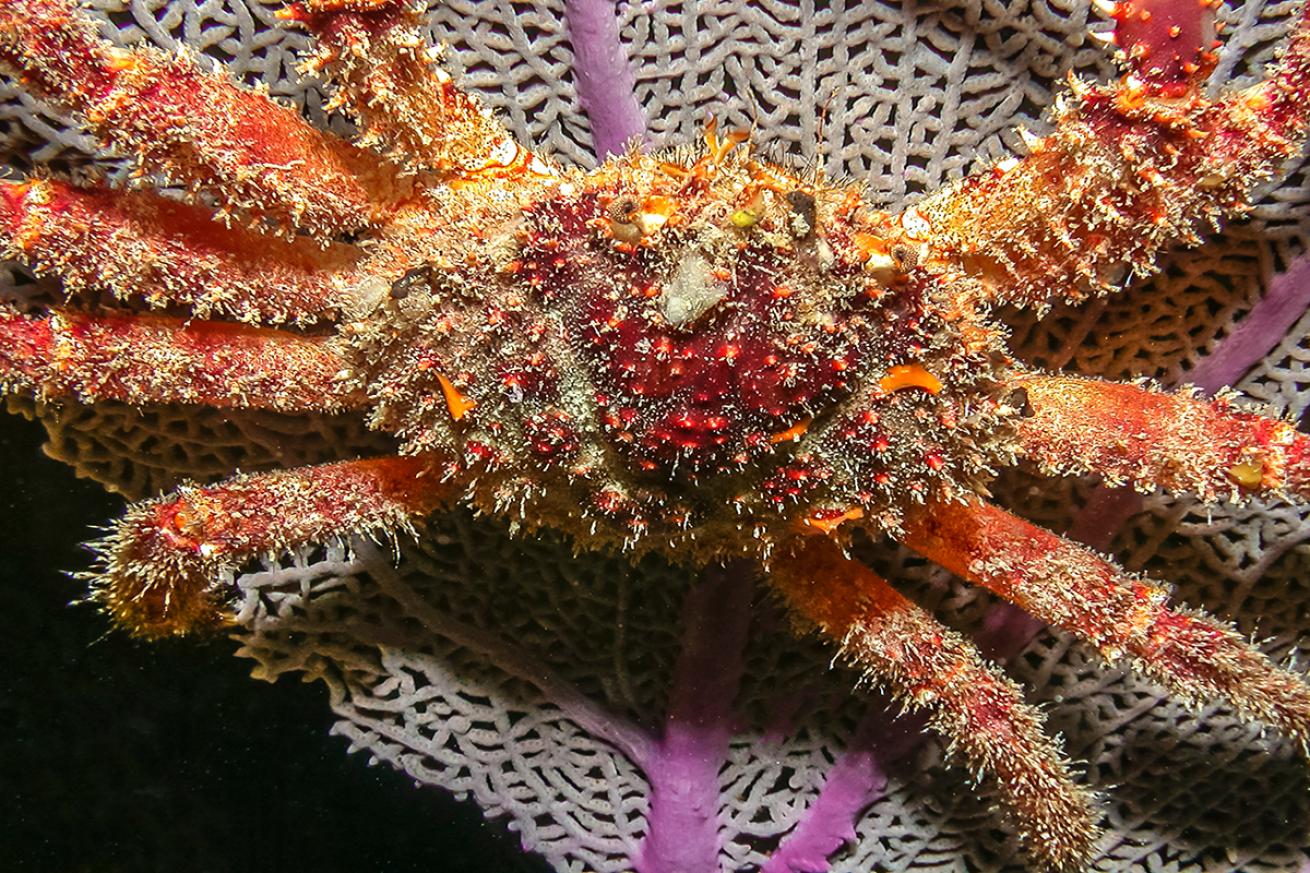Giant Seaweed-Eating Crabs Could Help Revive Florida Keys Corals

Shutterstock.com/John A. AndersonThe native crab is happy to graze on seaweed other animals avoid, helping weakened reefs fight against becoming overcome by algae.
Florida’s reefs have been on the decline for decades, but scientists have found a natural remedy for one stressor that’s been stunting reef growth: algae-eating Caribbean king crabs.
Warming oceans, overfishing, and coral disease in the Keys have weakened corals, allowing algae and seaweed to overtake many reefs. But a new study out of Florida International University found the presence of king crabs in these reefs can keep algae growth to reasonable levels. The crabs, which are native to Florida and the Caribbean, eat algae, including seaweed, as their main food source.
“We’ve had a lot of experience raising these crabs for human consumption, but I started looking at what their ecological role was on coral reefs,” Mark Butler, an FIU professor and co-author on the study, tells the Miami Herald. “They are like reef cows, or better yet, reef goats, because they will eat almost any type of algae, and they eat a lot of it.”
While seaweed provides plenty of benefits to the ocean ecosystem, too much growth can be harmful to reefs. For example, overgrown algae can prevent baby corals from settling onto reefs and block the light needed for existing corals to grow, as well as produce chemicals that can affect corals’ reproduction, immune responses, and fish attraction.
Other species eat algae, too, but there are certain types that not all will graze on, such as Halimeda seaweed. Butler says the areas in which they conducted tests for the study were nearshore waters where Halimeda was abundant. Caribbean king crabs were able to reduce the seaweed cover by 50 to 80 percent.
Thanks to the “reef goats,” the coral reefs in experiment areas saw a three- to five-fold increase in the number of baby corals that settled on the reef as well as a boost to fish populations.
The next step, Butler says, is to figure out what would happen if too many crabs inhabited the reefs. As they typically stay on one reef system their entire lives, there’s a possibility of a population boom.
“We’re going to have to figure out what is the exact density we should keep,” he says. He’ hopes the research will become part of the National Oceanographic and Atmospheric Administration’s “Mission: Iconic Reefs,” a multimillion-dollar project to restore reefs in the Florida Keys National Marine Sanctuary.










